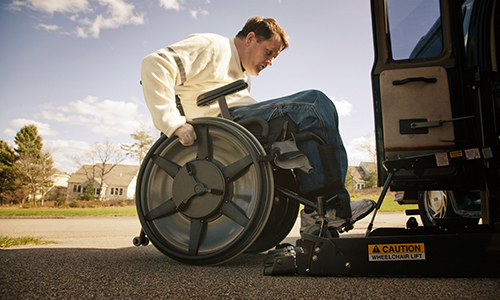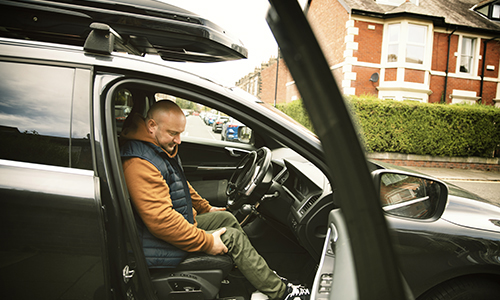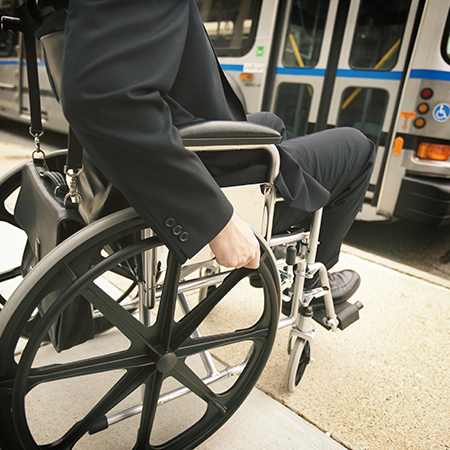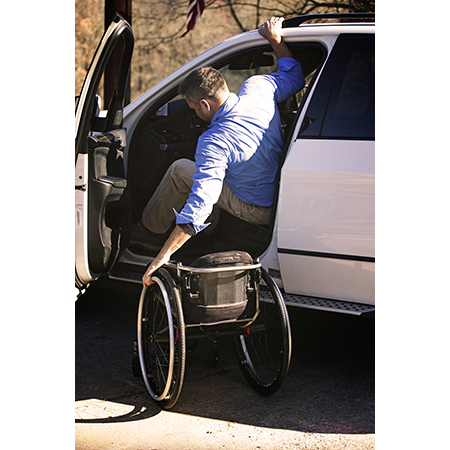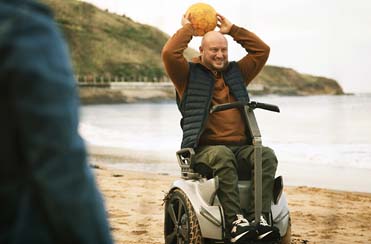Adaptive driving equipment gives you a chance for greater mobility after a spinal cord injury. Discover adaptive driving solutions to get back on the road again.
After your spinal cord injury, adaptive driving offers the opportunity to feel a little closer to some normalcy. Behind the wheel, there’s an obvious sense of freedom and independence. Those feelings of blending in and normality are invigorating for many drivers with paralysis.
If you’re looking to get back on the road, it’s important to do some research and recruit the help of your occupational therapists and adaptive driving experts. To get you started, here is an overview of what it takes to start your adaptive driving journey.
Collaborate with an adaptive driving specialist
First, it’s vital to be approved to explore driving by your occupational therapists. Once cleared for driving, it’s time to work with a driver rehabilitation specialist to evaluate your skills and ability to sit behind the wheel and navigate the everyday challenges on the road. Your occupational therapist may be able to refer you to a qualified driver rehabilitation specialist (or contact the resources listed below).
The expert will
· Evaluate your physical abilities and limitations, such as muscle strength, flexibility, range of motion, coordination, reaction time, and vision
· Assess other crucial factors like decision-making and judgment abilities
· Judge your ability to operate adaptive driving equipment, such as hand controls for accelerating and braking
· Offer a report that details adaptive driving requirements and restrictions as well as recommended vehicle modifications
Get your adaptive driving vehicle
After your evaluation, your driver rehabilitation specialists should be able to refer you to mobility equipment dealers that can sell you a new car with the adaptive driving gear you need. Another option is modifying your existing vehicle.
Of course, it’s also vital to ensure the vehicle you’re considering can accommodate your wheelchair easily, which the experts can help you with as well. If you choose a van, he or she can make sure it’s equipped with the proper ramp attachments or chair swivels.
You’ll find the process is not unlike buying a new car. However, adaptive driving vehicles or modification equipment can be expensive, with new modified vehicles demanding luxury car prices. That makes research even more important so you can find the best deals.
If you need financial assistance, health insurance or worker’s compensation reimbursements may be available to help offset the high costs. Also, other financial assistance, such as grant programs from non-profit groups, may be available. Some states waive sales taxes, and some auto manufacturers offer rebates or special discounts. Work with your adaptive driving dealer and other experts to identify all potential sources of financial assistance.
Get your local driver’s evaluation
After your spinal cord injury and following your adaptive driving modifications, you’ll need to obtain a valid learner’s permit or driver’s license to receive an on-the-road driving evaluation.
Laws prohibit discrimination based on disability, so you can’t be denied the opportunity to apply for a driver’s license or permit. The results of your driver’s license or permit test will determine whether you’re allowed to drive (just like everyone). Once you’ve passed your test, you’ll be issued a driver’s license or permit with restrictions. These will be based on the adaptive driving equipment — such as hand-operated accelerators and brakes — you’ll be operating.
So, with a little research, a little help from experts, and a driver’s license test passed, you’ll be on the road again, enjoying your newfound sense of independence.
Adaptive driving resources
The Association for Driver Rehabilitation Specialists (ADED)
National Mobility Equipment Dealers Association (NMEDA)
Christopher & Dana Reeve Foundation – Cars and Driving
Mobility Works (financing, grants, and veteran’s assistance)
Resources:
- file:///C:/Users/jmora/Documents/Projects%20(laptop)/Hollister/adapting_motor_vehicles_brochure_810733.p
- http://s3.amazonaws.com/reeve-assets-production/English-PRG-2017_Smaller.pdf
- https://www.carsdirect.com/car-buying/disabled-driving-how-to-get-your-drivers-license
- https://www.dmv.com/blog/tips-for-disabled-drivers-520311
- https://www.christopherreeve.org/living-with-paralysis/home-travel/driving



